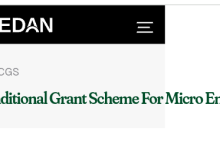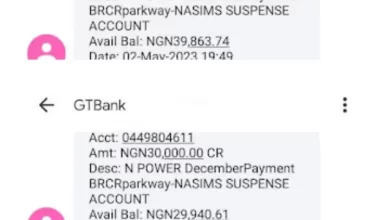Training manual PDF And Hot Message From The Chairman of National Population Commission (NPC) 2023

Training manual PDF And Hot Message From The Chairman of National Population Commission (NPC) 2023

Training Manual PDF – Nigeria has a lengthy history of conducting censuses. In 1871, the first census was taken. The boundaries of the 1871, 1886, and 1896 censuses were Lagos Island and specific areas of the Lagos Mainland.
A few more urban towns in the area were covered by the censuses in 1901, 1911, and 1921. colony. In reality, the majority of these censuses were population estimates.
Even while the Census of 1952/53 had a complex organizational structure, its lack of simultaneity, which could have resulted in double counting, is thought to be a weakness.
In Nigeria, the first census after independence was conducted in 1962. This was categorically abandoned, and a different one was held in 1963.
You may check 👇
how-to-edit-your-application-to-get-approval-easily-npc-adhoc-staff-recruitment-portal-2023
npc-enumerators-and-supervisors-15-list-of-things-to-know-before-31-to-pass-training-easily
when-is-the-npc-adhoc-staff-approval-ended-2023-2024-npc-adhoc-staff-recruitment-portal-login-recent-news
npc-status-showing-pending-in-2023-reasons-and-the-full-solution-you-must-follow
Training manual PDF

Click here To Download The NPC Training Manual
Nigeria’s history with censuses Population and Housing Censuses (PHC) serve as the cornerstone of statistical systems by providing baseline data for other statistics as well as benchmark statistics of a nation’s population and housing stock.
The British colonial government’s first census was carried out by the Colony of Lagos in the year 1866, marking the beginning of what is now known as Nigeria. In the years 1871, 1881, and 1901, there were also decennial censuses performed just for Lagos Colony.
The Southern Protectorate, including Lagos, was included in the 1911 census, which was conducted ten years later. Due to the inclusion of all of Southern Nigeria, the 1911 census had a greater scope.
This was made possible by Lord Fredrick Lugard’s 1906 merger of the Lagos Colony and the Southern Nigeria Protectorate, which took place five years before to the census.
The conduct of censuses in Nigeria underwent significant modifications as a result of Lord Lugard’s union of the Southern and Northern Nigeria Protectorates in 1914 and the adoption of a Census Ordinance in 1917.
for the 1921 completion of the first countrywide census. The following national census, which was conducted in 1931, was also not entirely inclusive. Due to the fact that just six towns, including
Lagos and 201 rural communities all throughout the nation were covered. The values for additional locations were generated using estimates from already-existing tax information.








